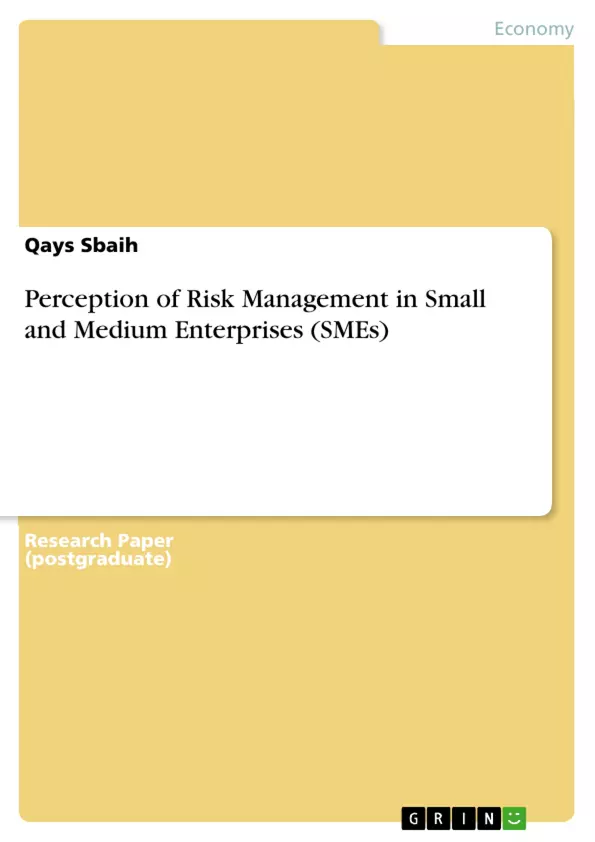This article provides an empirical evidence of risk and risk management in SMEs in Palestine and the effect of RM on its performance using several method for assessing risk, RM and performance for (N=330) SMEs participant in Ramallah. Most of SMEs in Palestine do not have a written and formal risk management plan. They mostly concern about Financial and Strategic risks, while Hazard and operational are the least concerned respectively. Performance in SMEs considered medium according to Performance Comparison Approach. SMEs with highest degree of written risk management plan have better performance.
There is a positive correlation between the prospective of the owner/ manager of risk analysis and SMEs’ performance. Strategic and hazard risk analysis is positively associated with performance. The high level of risk mitigation the more SMEs tend to have better performance.
Inhaltsverzeichnis (Table of Contents)
- PERCEPTION OF RISK. RISK MANAGEMENT IN SMES AND EFFECT ON PERFORMANCE: EVIDENCE FROM PALESTINE.
- Literature Review
- Risk Management Process (RMP)
- Types of Risks
- Performance Measure in SMEs
- Risk Management and Performance
- Methodology
- Measuring Risk and RMP
- Performance measure
- Reliability test results
- RESULTS AND DISCUSSION
- Performance of SMEs
- Applying formal/written risk management plan in SMEs in Palestine
- Is there a relationship between implementing formal/ written risk management process and performance at SMEs in Palestine?
- Other results
- Discussion and Conclusion
Zielsetzung und Themenschwerpunkte (Objectives and Key Themes)
This article examines the perception and involvement of risk management in small and medium enterprises (SMEs) in Palestine. It investigates the impact of risk management perception and risk exposure on SMEs' performance using sophisticated methods to measure risk management and performance. The study aims to determine whether formal risk management plans are implemented in SMEs in Palestine and the correlation between risk management implementation and performance.
- Risk perception and management in SMEs
- The impact of risk management on SMEs' performance
- Prevalence of formal risk management plans in SMEs in Palestine
- The relationship between risk management implementation and performance
- Types of risks faced by SMEs in Palestine
Zusammenfassung der Kapitel (Chapter Summaries)
- The first chapter of the paper provides an overview of the importance of SMEs in the global economy and specifically in Palestine. It examines the challenges faced by SMEs, including their high-risk nature and potential for failure due to lack of strategic planning and risk management.
- The second chapter delves into the literature review on risk and risk management. It defines risk as uncertainty and explores various definitions and drivers of risk. The chapter also discusses the concept of risk management as a process to identify, analyze, measure, treat, mitigate, and control risks.
- The third chapter outlines the methodology employed in the research. It describes the methods used to measure risk, risk management processes, and SME performance. The chapter also details the reliability test results.
Schlüsselwörter (Keywords)
The primary focus of this paper is on risk, risk management processes, small and medium enterprises (SMEs), and performance. The study explores the perception and implementation of risk management within SMEs in Palestine, analyzing the relationship between risk management and performance.
- Quote paper
- Qays Sbaih (Author), 2017, Perception of Risk Management in Small and Medium Enterprises (SMEs), Munich, GRIN Verlag, https://www.grin.com/document/461098



